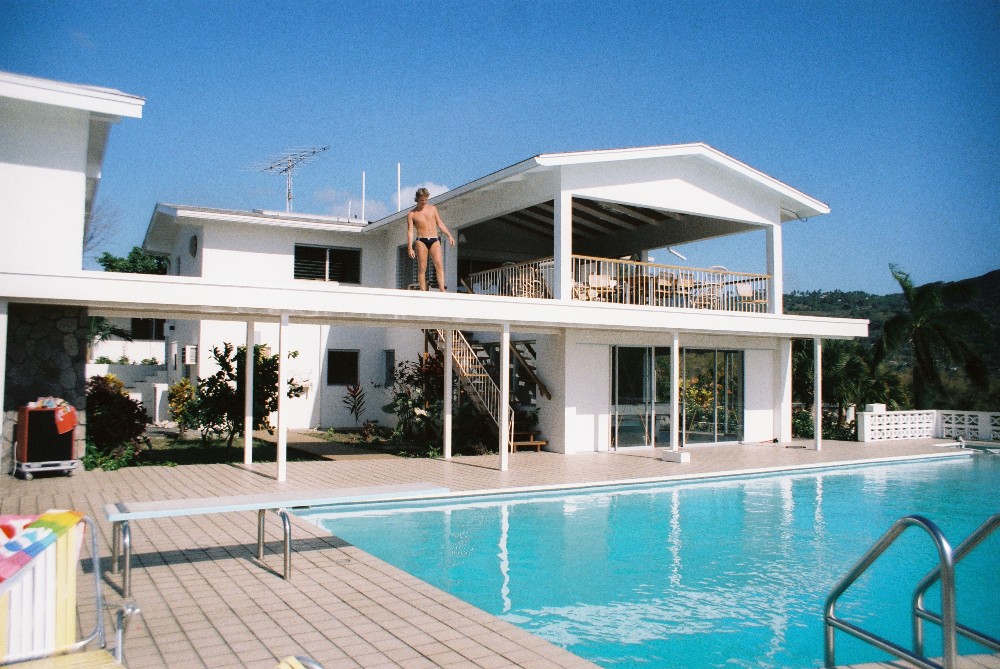
Most people will know who Sir George Martin is from his work with the Beatles in the ‘60s and working with various artists after that. Maybe not so people realize that the producer had built a studio on the Caribbean island of Montserrat in the late ‘70s, and it would become the go-to studio for the likes of Elton John, The Police, Black Sabbath, Dire Straits, and eventually the Rolling Stones. That is, until fate hit the tropical island in a horrible way. One of the defining aspects of Martin’s Air Studios Montserrat was that it was located on an island with an active volcano, which wasn’t so much of a problem… at first. The volcano going off a few years after a horrible hurricane hit Montserrat put an end to Martin’s studio.
The history of the studio and its legacy of bringing British artists to the Caribbean to make music has been captured in Gracie Otto’s new documentary, Under the Volcano, produced by Cody Greenwood. Below the Line spoke with the two filmmakers recently, and Ms. Greenwood spoke to us about how her artist mother, Frané Lessac, had spent a lot of time in Montserrat during that time. “She had made her living selling her artwork to all the musicians who had come down to the island and was there just before George Martin moved down there,” she told us in an earlier interview. “For me, it was a really personal story. I’d been to Montserrat throughout my childhood, both pre- and post-volcano. So that was really like Genesis I guess for the idea to make a film.”
“When we were making this film and traveling around the world, everybody was saying, ‘Why are Australians making a film about the Brits and the Caribbean?’” she added.
Ms. Greenwood already knew Sir George’s son, Giles, since her mother was friends with his family, as well as with The Police guitarist Andy Summer and two Air Studios technicians, Malcolm Atkin and Dave Harries, and that helped the two women start the process of getting people to talk to them for their film.
After our initial interview, we had a lengthier discussion with Gracie Otto at a time when, unfortunately, Greenwood couldn’t join us, so the interview below was done solo with Otto, even though we do have a little extra bit from the producer in there as well.
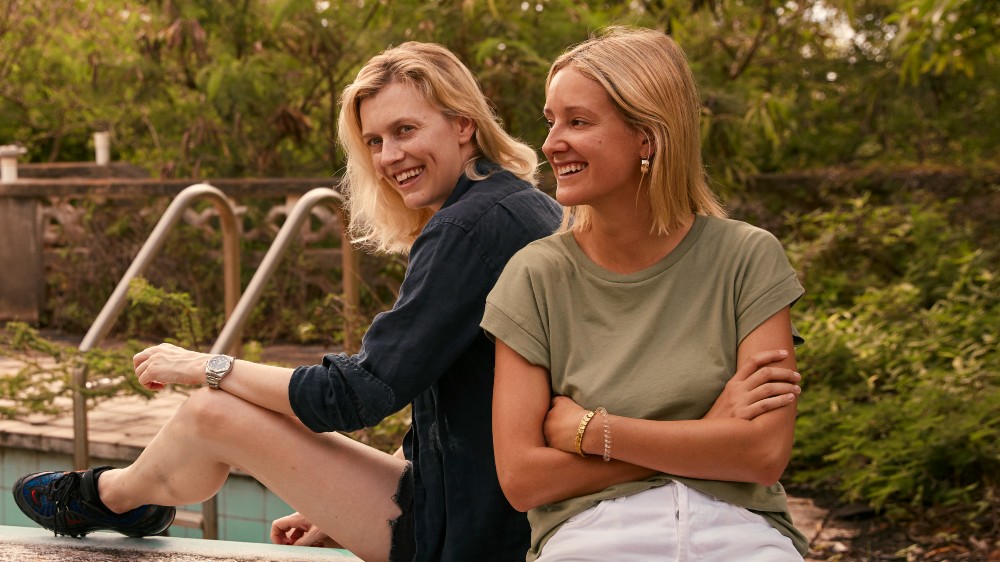
Below the Line: What got you interested in making a documentary about Air Studios Montserrat?
Gracie Otto: For me, I’m always interested in the unknown and curious about new subjects. I’d done a feature documentary, The Last Impresarios, that was about a British theatre and film producer that had a lot of talking heads in it. This one, for me, had this British element that I felt like — not that Sir George Martin and Michael White had anything in common, but they both did work with Spike Milligan, they both kind of had a similar upbringing in a way. So, there was some kind of historical context of that time in England that I had already kind of come across and been really interested in. And then, obviously, all the music and the bands. Who doesn’t want to make a film on this? When Cody came to me, I was like, this sounds amazing, and we got going.
BTL: Had you worked with Cody previously on something?
Otto: This is the first time we’ve worked together, but it looks like we’ll hopefully work together on many more things, because everyone always says that making a documentary is like having a baby, like a marriage. We had such a great team of people across the film. I had a lot of the team that I used on my first documentary come over to do this. It was great, because Cody had already interviewed Sting when I came on board. I had the same feeling I made with my first film, and it really helps when you can say these are the people attached to it, and we’ve already done interviews. It’s still hard to get… some people, we spent a long time trying to get them in a lot of persuading, convincing, not keeping us from getting them. I think there’s probably a few we would have probably hopefully gotten if the pandemic had not then struck the world down when we were finishing up our final shoot.
Our next question was about the timeline for the film, and Greenwood spoke a bit about that: “We did a lot of research into the albums that went down, and we got really fortunate that the way that the narrative of the film unfolds is essentially chronological. At any great midpoint in the film, as you’re getting towards the climax, the cracks are starting to show and things are definitely changing. For us, that was The Police starting to break up, and then we got the Dire Straits when the recording industry was changing and things were going digital. After The Police, things started to fall apart, and it was the same with Duran Duran, who actually didn’t enjoy recording there. We wanted to only focus on a select few bands, so it didn’t feel too back-to-back, wall-to-wall, album-to-album heavy. I think that’s why a lot of people really enjoyed the film because they’ve got to know a little bit more about their favorite bands.”
Back to our interview with Otto…
BTL: How did you figure out the timeline of the studio in terms of how to tell its story?
Otto: Cody has a 70-page research doc with every band and artist that went down there to record. When you start those kinds of films that have got the potential for so many people, there’s always like, A.) Who can you get? B.) What are the most interesting stories? I think what resonated with us with other modern music documentaries was that we really want to tap into the relationships between the bands. There were other people that maybe if we got them, we might have gone a bit more into their story, but we kind of felt like chronologically, the arc just worked. That was a real fluke that from Jimmy Buffett being one of the first people to record there to the Stones, we had this kind of bookend of George producing the Beatles, and then the Stones being the last band to record there. Within that, the ebbs and flows of bands, loving it or not liking it and not getting along. That was a real luck in the edit, I have to say that it kind of ended up being that way. We didn’t have to change the chronological decade in any way. We just felt like Elton obviously was somebody that had recorded the most albums down there — he recorded three albums– The Police recorded two. We liked the idea of the people who’ve been down there a few times and what their experiences were or how they changed, and who were the bands that were at the forefront of that time as well and bands are were on the rise like Duran Duran, or the fact that Dire Straits did the first digital recording there. There were people we did interview Roger Glover and Tony Iommi, who kind of ended up in a montage. It was just at that point in the film we had moved into the digital space, and we kind of wanted to end on the Stones. They kind of came at a time that was a bit different down there, so yeah, things like that changed a bit.
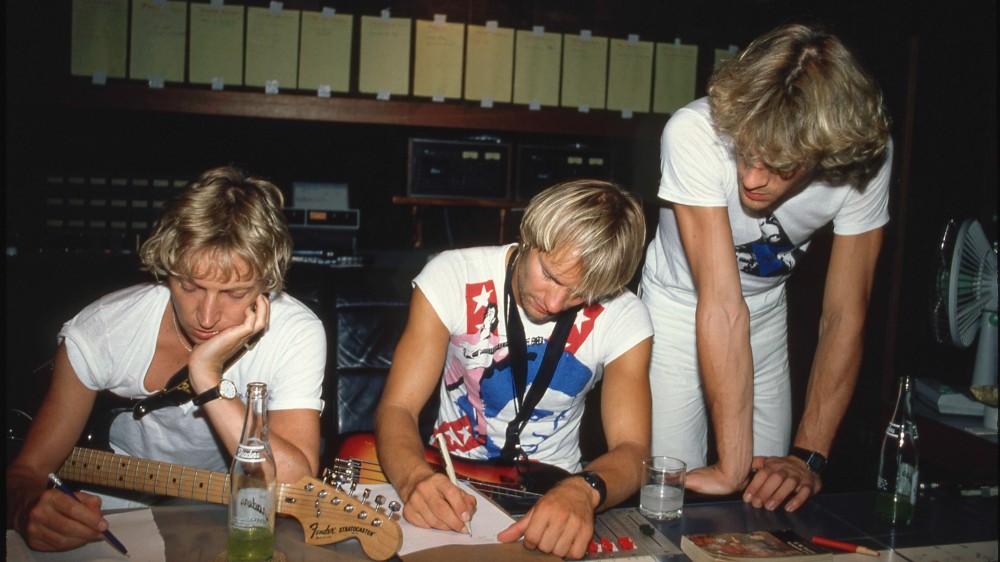
BTL: How many interviews did you actually do? Did you go down there early on or did you do a lot of the interviews before going down there?
Otto: We did maybe 12 interviews in the first six days — that was pretty heavy, like we landed in London and did Midge Ure, Giles Martin, his family, Chris Thomas… so that was quite a long, quick slog, and then we went to Montserrat, which was great, because then we’ve got all the stuff on the island, all the people down there. Cody had already known those people and knew how important they were to the story. That was kind of really great, getting down there and being like, yeah, these people need to be in the film. And then, we kind of naturally went over to America and started doing more interviews there, and then we came back to Australia, and our editor started at the same time as we were shooting. She kind of got up to speed of what we had experienced over there, interviewing people. It was kind of then working out the holes and the big ones like Mark Knopfler, we’d tried to get him the numerous times we’d been there. We flew over there to interview Nick Rhodes and got back to Sydney Airport, and he said he’ll do an interview next week, and we went back to Lonon pre-pandemic. The strategy is we had interviewed the keyboard player of Dire Straits. so that hopefully, he would go back and report to Mark Knopfler that the interview went well. But it’s good to get as many people from the band, and that’s why The Police is one of our favorite seconds, because they had two experiences when they went down there, and we also had all three band members, and we had incredible archives and personal archives on them. We kind of had the full 360.
BTL: I’m a big fan of The Police, and seeing all three of them talking about the experience was interesting because it’s rare that you get so many different perspectives on an experience like this. When I worked in recording studios, everyone had a different opinion on the process, so sometimes, it’s amazing that records get made at all.
Otto: I’ve always loved documentaries that have a lot of people talking about it. We knew going into it that we obviously have an ending with the volcano. We knew that it was like this perfect decade as well, that it was 10 years of music, so that was good having that. The hard thing was obviously trying to come up and show the history and some cultural context about Sir George. A lot of people obviously think they’ll know a lot about him, but there are people like in my generation that don’t, and it was kind of like, how do you start the film, because you want to go to the island, but you also need to know who George is. It’s not really a film about him, but he’s still a huge character, the island’s a huge character, the studio’s a huge character, and then you’ve got the hurricane, the volcano, and all that music, and then all the people who live down there. It was a lot to whittle down. A lot of people were like, “Why don’t you just make a TV series?” And we were like, “Yeah, that totally would be so much easier.”
BTL: I think Cody mentioned that her mother worked down there, so was Cody living down there as well?
Otto: She went down there a lot as a child, and there’s some great photos of her in the paper here in Australia the other day as a child down there. Her mom actually went down there before Sir George, because she’d heard about this place that was like this island that was a bit back in time. She was an incredible artist and really loved it down there, but then she obviously became friends with everyone at the studio, because it’s such a small island, and then as bands came, she would always be hanging out with them. She’s lifelong friends with people like Andy Summers, so it was really great that Cody’s mum Frané [Lessac] came down to Montserrat with us. She hadn’t been back, and we took Malcolm [Atkin] and Dave [Harries], who built the studio. It was really sad for them to see what the volcano had done years later and what the studio was. We had that nostalgia and sadness for it but seeing them stand near the volcano and cry, that was quite humbling.
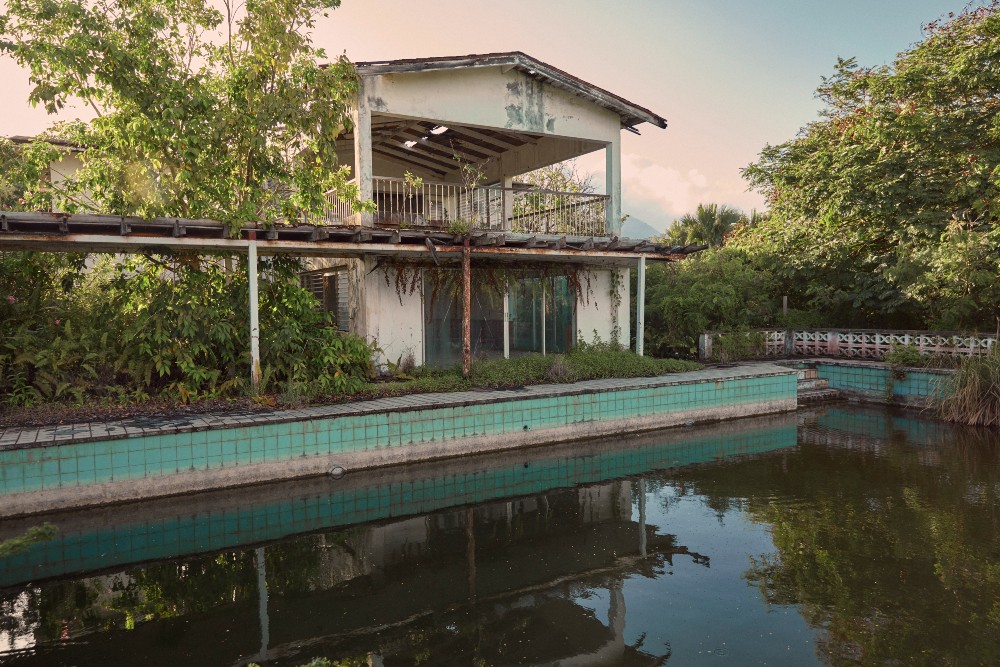
BTL: What’s the infrastructure for filming like down there? Did you have to bring a crew with you or a small crew?
Otto: It was a nightmare, because there was just so much stuff, and it’s exactly how it would have been back in the day at the studio, bringing in all this high-tech equipment. They didn’t have shot bags down there. They literally had bags filled with sand that were tied up. We were trying to get a dolly down there. If something went wrong with any of that equipment, there was nowhere that it could be fixed or there were no spare SD cards lying around. That was definitely challenging, the preparation to go down there, and it being so remote. Our Cinematographer [Hugh Miller], he had done a film called Sherpa, where he had climbed Mount Everest and shot it all, so Cody had chosen him as the cinematographer. Years ago, I was an actor, and I’d actually acted in a film that he’d shot, so I knew him as well. She was like, “If anyone can be in a remote place, shooting and making things work, it was him.” So that was a good choice. Definitely, we had to get permission. None of the locals had really been down there. So it was quite, I felt quite privileged that we got to go there and also was quite sad to think that we got to go there and some of the local people haven’t been back to their homes and they’re not allowed there. We went down there with the police, and we had to get permission from the Martin estate to step foot inside the studio, because it’s a hazard and you could fall right through the floorboards there, so it is a danger zone.
BTL: Where did the people move to? Did they just go to another part of the island?
Otto: Because it’s a British colony, a lot of people went to London, like Desmond and X, who worked in the bar, they — even though we tried to make their interview look a bit more like it was down on the island, we shot them in London. They live in London, so a lot of the people that were displaced went to the UK, and I think the population back in the day was like 10 to 12,000, and now it’s like 2000. When you go there, you drive for maybe seven minutes before you hit the exclusion zone. It’s such a tiny island, and to think two-thirds of that island is uninhabitable is incredible. It’s just weird driving down there and seeing all this beautiful green lush everything and black sand, and then you just turn and then there’s one house that just doesn’t exist, and you’re like, “Wow, that person got hit by the volcano and the other one didn’t… ”
BTL: When I watched the movie a second time I decided to look at a map, and then, I realized exactly how far Montserrat is from Miami. It really is far out there!
Otto: I think we flew from London and then we flew back to Miami, but we went to Antigua, and we interviewed Tony Iommi, and he talked about his plane that nearly went down. I was just like, “I’m not getting on a tiny plane with a bunch of equipment.” I’ve read enough about small planes and bands going down on planes, so And then, going down on plane, but it’s so scary, it was middle of the night, and it was like two hours or something on the ferry where it was going to be a 15-minute plane ride, and we got there at like 11 o’clock at night and got to customs, and it took three hours to get through, like island time, so we were pretty tired after that journey.
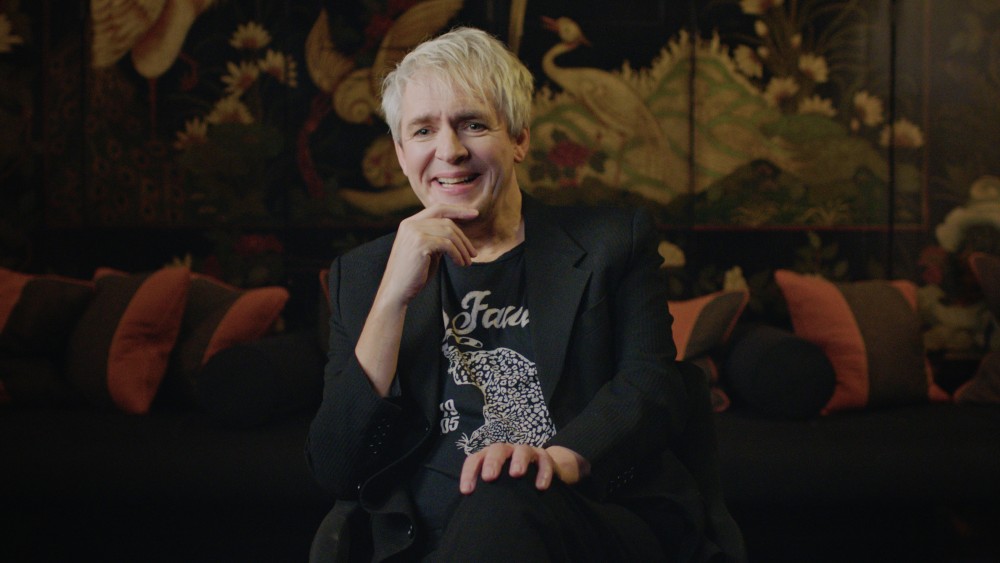
BTL: Since so many of the people on the island at the time had left, was it harder for Cody to find them, or had she been in touch with them so you could meet up with them in London?
Otto: It was interesting because some people would say… “Moneta (who was the housekeeper), she lives in the yellow house,” and we’re like, “Okay, so can you give us the address?” And they’re like, “Yeah, it’s the yellow house,” and we would literally drive around and see a yellow house and knock on the door and Moneta came out. And we’re like, “Oh, my God, she literally lives in the yellow house.” And then Tappy Morgan, Cody had some number for him that she’d been trying for ages. We’re just in L.A. one day, and she would just call him randomly every day on this number, and he’d just say, “Hello.” We nearly fell over, but she’d put him on speaker, and we’re like, “Hi, we’re making this documentary.” He’d never been to L.A., and he was living in Boston, so we flew him to L.A., and Jimmy Buffett emails the other day saying, “I’m on tour and I’m going to Boston. Can you give me Tappy’s details so I can have dinner with him?”
BTL: It definitely sounds like everyone who went down to Montserrat had a good time and mingled with the locals, making it a very different experience.
Otto: I wish we spent more time there, because I know that our camera assistant and our sound recorders were from the UK, they really hit it up every night. They went out to these tiny bars and drank jungle juice. But Cody and I, we were just on this mission of filming. Like the schedule was insane, that we just kind of would finish at like eight o’clock at night, and then, some of the investors had come down to see the filming process that was like looking after them and having dinner with them at night, and then, getting back up at six and going to do all these interviews and making the most of the time we were down there. It’s a shame we can’t go there now to celebrate the film with everyone, because of our country being in lockdown.
BTL: Did you finish all the interviews and filming right before COVID hit in 2020?
Otto: We were interviewing Mark Knopfler in December 2019, and then we interviewed Elton’s band and Gerry Beckley in Australia in January, and then we went over to France, because we’re going to start on another music doc. Now that hasn’t happened because of the pandemic. We were going to do one last kind of push to try and get Mick or Keith from the Stones. We were trying to get Elton, and then Paul McCartney, he’d given us his home video footage, and he loved the film. He had seen it and he was one of the first people we approached, but he was on tour at the time. There were talks that we might go over and meet someone from Elton’s team, and they were like, “Everything’s closed for a few weeks, so come over in April and have a meeting.” Then there was this weird thing when the pandemic hit, because it was a bunch of old guys who aren’t on tour anymore. They’re not going to be like, “Yeah, come to my house with COVID and do an interview.” We couldn’t even leave the country.
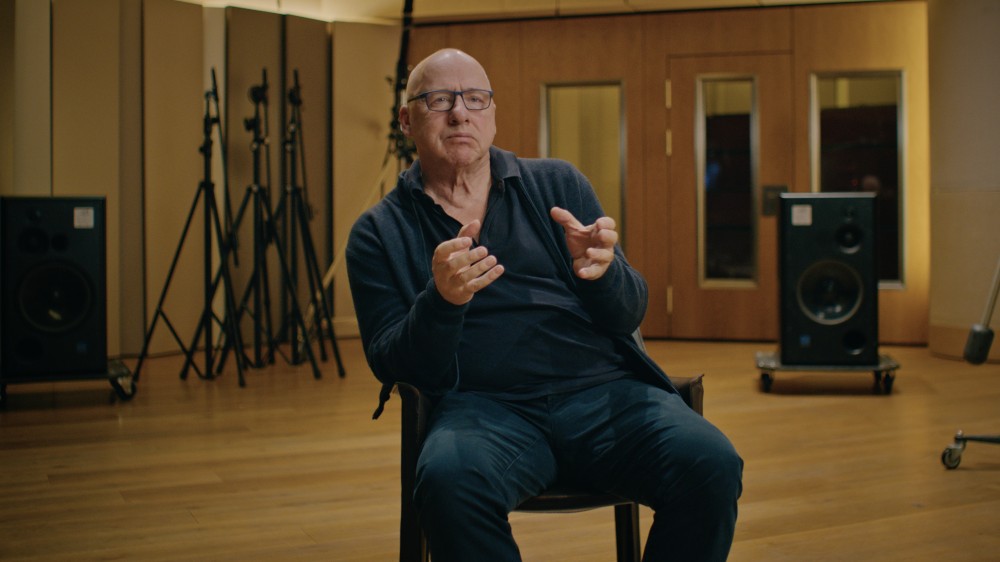
BTL: You weren’t able to do any Zoom interviews to fill in the blanks?
Otto: No, we didn’t. It’s interesting now, because I’m doing a documentary on my Dad, and I’m about to do a bunch of zoom interviews for it and record audio, because I think that’s the way that I can get these final interviews. I think people will [appreciate] watching this film now the fact that we went to London three times in three weeks to interview people [flying] economy. That was brutal. Like that wouldn’t happen [nowadays]. We interviewed Nick Rhodes and then Mark Knopfler, and now, unfortunately, we’d probably just send another director.
BTL: I also was wondering how you approached the music for the movie since you would have a lot of songs from these artists in the film.
Otto: Cody was super-smart with that. She went through all the bands and the biggest tracks and did a budget for that, and then she always says in interviews that I came along, and went, “I think it’s really important that we also show where the band was before going into the story of the island,” so I wanted some of the big hits from Elton, and that obviously inflated the budget. It was amazing and a huge one-year process getting all that music across the line. We were like, “Next time we do a film on one band.”
BTL: Is that movie Otto on Otto the movie about your dad, and is that something you’re still working on?
Otto: Yeah, that’s the film about my dad. My dad is an Australian film, television and theater actor, and I’m making a documentary about him, which is a much more personal, passion project that I shot most of it before I started on Under the Volcano. It took a bit of a dramatic turn, the documentary. When you make a film about your family. Now I’m kind of emotionally back into it and ready to finish it.
Under the Volcano is now able to rent or buy on YouTube, iTunes, and other digital and On-Demand platforms. You can watch the trailer below. (All photos courtesy NBC Universal, except where noted.)





